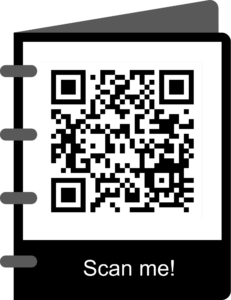Catching attention with digital signage is not all that difficult. It is catchy by design. What’s important is how to use this attention once you’ve obtained it. This is where quick messaging and communication within seconds becomes crucial. We’ve talked a bit about a general 5-second rule which acts as a guideline for content which is quick to understand. We went through some methods of quick messaging on digital signage, including quick wording, clear visual elements, using familiar phrases, and even teaching the viewer your unique style to ensure they understand your content faster in the future. Here are some additional ways to make your digital signage messages understood in seconds!
1. Utilize context
For quicker comprehension, tap into familiar elements in the viewer’s mind. Consider the context they will find themselves in as they view your display. Is the location of importance? Is there a landmark, or a visual in the vicinity you can use in your quick messaging to tie in with? You may use local terms or references to ensure the viewer understands what you’re trying to say with fewer words. Images or videos of local landmarks, sights, or even people can be valuable pieces of content to incorporate in your content for quick messaging on digital signage.
2. Use nostalgia
A more complex way to use context, nostalgia is a great source of inspiration. Cartoons, shows, phrases, or even items which evoke a nostalgic feeling will elicit a response in the viewer very quickly. Ideally, they should be specific to the local audience, perhaps decades old images from the city or achievements which are known among the community. Nostalgia can be useful even in a general context.
The visual style of ads from the 50s or images from the 80s, for example, are quickly recognized styles. This makes them excellent content elements for quick messaging on digital signage They evoke a feeling of nostalgia even if the viewer hasn’t had first-hand experiences from these times. Your challenge, of course, is to make these nostalgic components mesh well with your own content.
3. Collaborate with the locals
Working alongside other businesses is a great idea on its own. Naturally, as long as that business is complementary to your own. However, working with businesses the local community recognizes and appreciates will automatically paint an image in the viewer’s mind. This also applies to working with local celebrities or individuals who are known by your target audience. It creates a sense of authenticity and trust, making viewers more receptive to your messaging.
For example, a well-known local may endorse a restaurant’s new menu item. It builds trust with the audience. In the context of quick messaging, it quickly adds a layer of credibility and excitement before the viewer even sees what the menu item is.
4. Maximize impact
You’ve considered all tips about clarity of the message for fast comprehension. Your sign has very few words and is easy on the eyes. We’ve ticked all the boxes on the speed of delivery. Now, consider the impact of the image which is portrayed. This is most important when you’re seeking to evoke an emotional response or excitement in the viewer. The point here is to not sacrifice the impact of the message for the sake of speed. Both are equally important, so the balance between them is critical.
For example, if you advertise a luxury product, like jewelry or watches, the imagery should reflect elegance, sophistication, and exclusivity. These should not be sacrificed only to quickly let the viewer know that a new product is available. A similar example is a family-friendly context. If you promote such an event, some more complex imagery is needed to show the warmth, joy, and inclusivity. Remember that, while quick messaging is crucial, there are some messages that simply cannot be packaged in a single word such as “Sale!” And that’s quite alright!
5. Use dynamic transitions
Movement draws the eye of the viewer. A common issue is excess movement which tugs at the viewers’ eyes from all directions. A great way to precisely direct the viewer’s eyes to content on the screen is to use dynamic transitions that stand out from the content surrounding them. This makes the viewer quickly notice what has changed on the screen and observe it.
With OnSign TV, for example, apps have animations which make content shifts noticeable in a very pleasant way. It’s important to get that balance just right, where the transition is noticeable and informs the viewer there is a change happening, but also to not be too flashy where it’s constantly distracting.
Transitions are more important than simply shifting from one content piece to another. In the case of screen-division, it may be that the viewer notices something has shifted on the screen from the corner of their eye. But they cannot identify what the change actually is, so they don’t know where to look or there are several changes happening at the same time. Smooth transitions solve this problem!
6. Utilize QR codes
QR codes offer a great way to use several of the aforementioned elements together, including context, quick messaging, and clarity. Let’s do a quick example!
Maybe you run a sales campaign and for whatever reason, it’s a bit complicated and takes time to explain. It’s a great campaign, you think, if only your shoppers took the time to read through a detailed description. Instead of dumping an entire paragraph and a step-by-step guide on your digital signage, you decide to make it much simpler with a QR code. So you put up a sign that explains the campaign in a nutshell. Something like “Collect points: Save up to 50%!” or “1 Point for Every Purchase.” Under this message you place a prominent QR code which will lead the viewer to a landing page where everything is explained in detail. It goes without saying that this landing page needs to be intricately designed and reference the on-screen campaign.
QR codes help simplify messaging, putting all the complexity in a single symbol. This allows for short messages without needing to provide details.
7. Test and adapt your quick messaging
The best way to increase the speed of your messaging is to know how well your current methods are working. With the QR example above, you can simply track how many visits to the landing page occurred. Comparing this to other quick messaging styles you tried, you will quickly see which phrases and wording engaged the viewer in the short timeframe they appeared. By systematically testing variations in headlines, visuals, and calls to action, you can identify the most effective combinations and tailor your messaging accordingly. You may even cut down the time for the ad in question. If the results are consistent even by displaying it for a shorter amount of time, you will learn to optimize the screen time better.
With digital signage software like OnSign TV, you can tweak your campaigns, schedule content ahead of time, and easily track how and where it’s deployed. Try it out!
Cover image by HelpingHounds.




